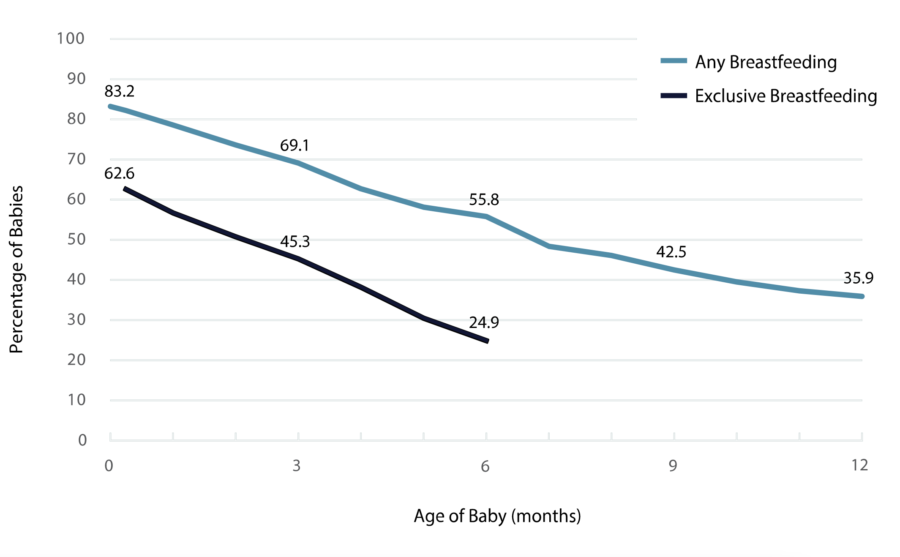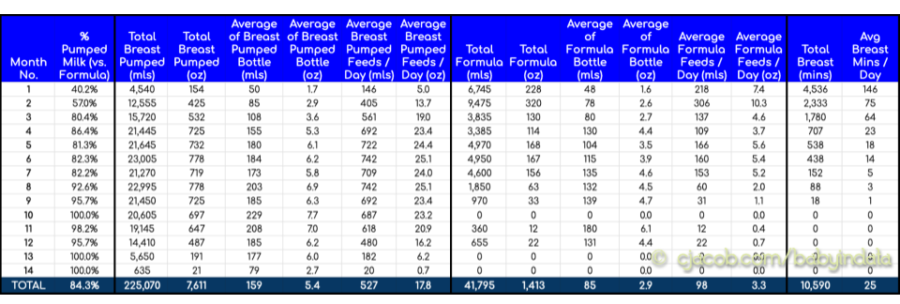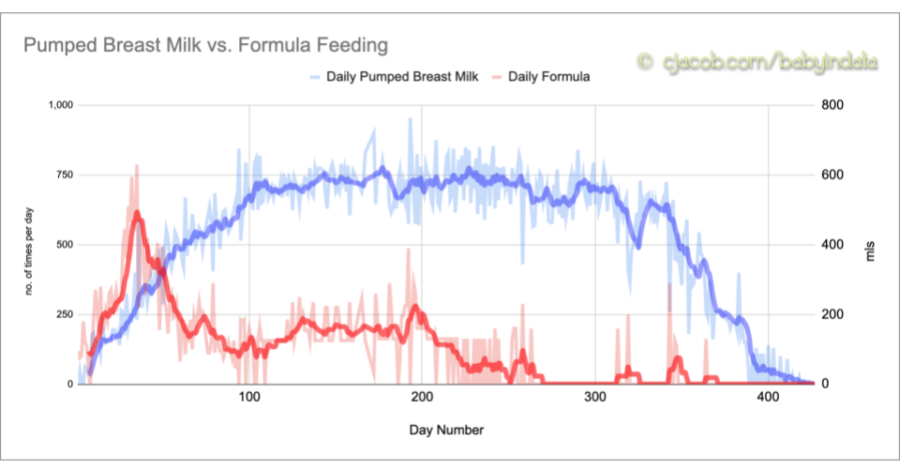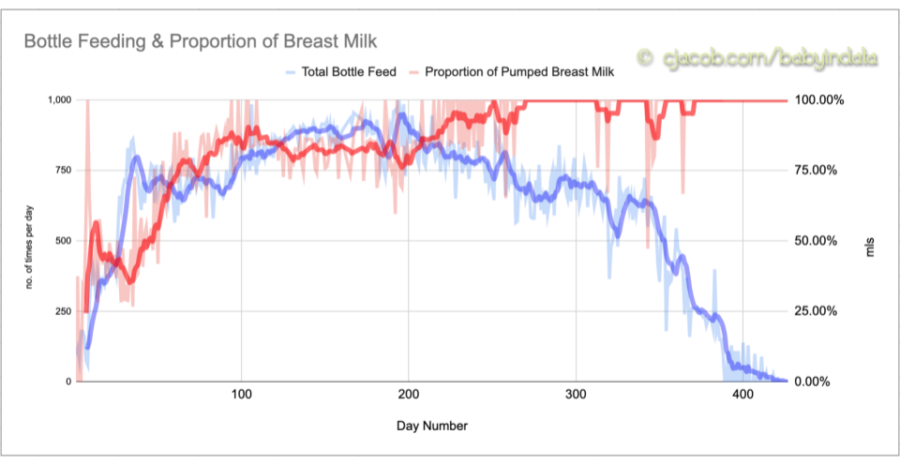So we now are at a potentially controversial topic for many. To be clear, this is not a post about whether breast milk or formula is better for your baby, or the best practices around each. There are plenty of resources for that information and forums for that debate. This post, as outlined in our overview, is our 14 month journey of feeding our baby told through data, with today’s focus on the evolution of breast milk and formula as consumed by our baby, and the trends over time.
A couple of points before we delve into the data:
- Our goal as parents was to feed our child with breast milk for as long as possible, with the expectation that pumping would be part of that journey (likely more important when mom went back to work). However, as explained earlier, our baby had a weak suck, and so pumping became the primary way our daughter consumed breast milk. Formula, for us, was ideally going to be a supporting part of our daughter’s diet. As you will see, that is not what happened, at least not in the beginning.
- In future posts, we will take a deep dive into mom’s pumping journey as well as a formula deep dive into the different types of baby formulas we used, plus our thoughts behind them.
Feeding your baby is an inherently personal decision based on mother’s (parent’s) health, baby’s health, ability to take (paid) time off, healthcare coverage / financial health, space in home, support from family/friends nearby, access to specialists/experts of all types, hired help, and more. So this post is not a commentary on the best way to feed a baby.
To further emphasize this point, below is data from the U.S. CDC in 2022 based on U.S. babies born in 2019.

Source: US CDC 2022: Percentage of Babies Receiving Any and Exclusive Breast Milk During the First 12 Months, Among Children Born in 2019
Fundamentally what this chart shows is that at birth, at least 16.8% of babies are fed a combination of breast milk and formula. In fact in this cohort, 19.2% of babies in the U.S. are fed some formula in their first 2 days of life. By month 6, that proportion increases to 44.2%. Now while solids tend to start to become part of a baby’s diet after month 6 (which is not captured here), it is likely that from months 6-12, the majority of babies are likely having a combo of breast milk and formula as far as their liquid diet is concerned.
Now, why am I emphasizing the above?
In the overview I noted that one of the reasons I am publishing all this data via these posts is to hopefully help other parents have some basic benchmark of what to anticipate. If you search online when looking for benchmark data, what you will likely find are benchmarks that are mostly for exclusive formula fed and sometimes for exclusively breast fed milk babies (like we used in “14 Months of Feeding a Baby in Data“). As noted above, a significant portion of babies are fed both, and that only increases over time. Thus, this table of data is hopefully a beginning to see what combo feeding (mixed feeding) can look like so that other parents could adapt for their own purposes.
Table 1: Pumped Breast Milk & Infant Baby Formula by Month

Chart 1: Daily Pumped Breast Milk vs. Formula (7-day moving average)

Chart 2: Proportion of Pumped Breast Milk (7-day moving average)

Some Highlights:
- So you can see in month 1, only 40% of our baby’s tracked liquid diet was breast milk. Now as you will also see there was 4,536 mins (75 hrs 36 mins), or 146 mins (2 hrs 26 mins) per day, of time directly on the boob. So some breast milk came from all this effort, but from checks like weighted feeds with a lactation consultant and general baby tracking, we know it likely wasn’t that much (i.e. we noted earlier in our Baby in Data Series Overview, this was attributed to a “weak suck”).
- By month 2, the majority of baby’s diet was definitely breast milk (via pumping and being bottle fed). From then on, it was 80%+ breast milk from months 3 to 7, and then 90%+ from months 8 to 14 (of course during this later period, solids became the increasingly dominant part of her diet).
- You can also see the total amounts of liquid foods she consumed, which as we noted more deeply in “14 Months of Feeding a Baby in Data,” that this peaked in month 6 at almost 28 litres (~945 oz) or 902 mls / day (30.5 oz). At this point, 82.4% of her diet was breast milk at 23,005 mls (778 oz) or 742 mls / day (25.1 oz / day).
- Month 2 was peak formula month at 9,475 mls (311 oz) or 306 mls / day (10 oz / day). This was still a majority breast milk consumption month, as 43% of her liquid diet was formula.
